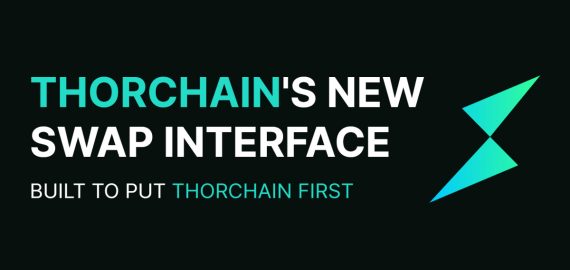React Metaframeworks: A Developer’s Guide to Do’s and Don’ts

Meta frameworks in React have been widely adopted in web applications since they help us maximize workflows and enhance user experiences. These frameworks add more built-in features, giving developers a more structured way to build web applications.
In this guide, we’ll be discussing what you should do and shouldn’t do when using React meta frameworks, and we’ll be looking at design consistency.
What is React Meta Frameworks?
React is a powerful framework, but it sometimes requires extra tools for tasks like routing, SSR (Server-Side Rendering), and SSG (Static Site Generation). This is where React meta frameworks come in. Built on top of React, meta frameworks add more features and offer greater control over web application optimization and maintenance.
Popular options include Next.js, Gatsby, and Remix. Each offers unique advantages:
- Next.js is known for its flexibility with SSR and SSG, making it a top choice for many developers.
- Gatsby excels at creating fast, SEO-friendly static sites.
- Remix focuses on clean server-client interactions with a strong emphasis on app performance and data management.
Why Are Meta Frameworks Important in Modern Web Development?
In the ever-expanding field of web development, the demand for faster, more interactive, and SEO-optimized websites has grown exponentially. These needs are met by React meta frameworks that come with pre-packaged solutions for those issues such as server-side rendering, static site generation, and routing. With meta-framework, we can simplify a project’s complexity, enhance its efficiency, and build apps that are easy to scale and maintain.
Furthermore, these frameworks simplify the process of incorporating design tools into the development processes. For example, when using tools such as Figma to React, meta frameworks support the preservation of the design standard across all the phases of the design and deployment.
Do’s: Best Practices for Using React Meta Frameworks
1. Leverage Server-Side Rendering (SSR) and Static Site Generation (SSG)
SSR and SSG are two of the biggest advantages of using React meta frameworks.
- Server-Side Rendering (SSR):
SSR helps React components render server-side before the resultant markup is deployed to the client. This shortens the period that users take to see the content hence improving the user experience and SEO. Framework such as Next.js simplifies the implementation of SSR empowering developers to create dynamic and fast-loading web pages. - Static Site Generation (SSG):
Another very positive feature that frameworks such as Gatsby or Next.js provide is SSGs. In SSG, the pages are rendered in build time, thus generating website files in advance that can be distributed to the clients. This methodology improves the loading time and performance of any website, as the page does not need to be rendered so many times on the server.
Through SSR and SSG, developers can create applications that are not only efficient but also optimized for search engines, with better user experience.
2. Utilize File-Based Routing
Routing is an essential part of any web app, and React meta frameworks bring file-based routing systems to simplify routing.
- File-Based Routing in Next.js: In frameworks like Next.js, routing is as simple as creating files within a specific directory structure. For instance, creating a new file in the pages directory automatically generates a new route in your application. This approach eliminates the need for complex routing configurations and makes it easier to manage large applications.
- Benefits: File-based routing reduces the complexity of a developer’s work, and enhances the maintainability of a project. By organizing routes and connecting them directly to the file structure, developers can easily manage routing configurations in applications without worrying about routing conflicts.
3. Optimize for Performance
React meta frameworks come equipped with various tools and techniques in its arsenal to enhance React app performance.
- Image Optimization: Frameworks like Next.js offer built-in image optimization capability allowing users to resize and serve images in the most efficient format automatically.
- Code Splitting and Lazy Loading: Code splitting and lazy loading can minimize the initial load time of your application. With this approach you can break your code into smaller chunks and then load only the necessary code for the current page, significantly reducing the amount of JavaScript that needs to be downloaded and executed.
- Reducing Bundle Size: The larger the bundle size, the slower the application, leading to a poor user experience. Meta frameworks offer tools to analyze and reduce bundle sizes, making your app remain fast and responsive.
4. Integrate with Headless CMS
Integrating your React app into a headless CMS simplifies content handling and scalability in the long run. Meta frameworks are integrated to support several Content Management Systems solutions.
- Using Gatsby with Headless CMS: For instance, Gatsby integrates with most headless CMSs including Contentful, Strapi, as well as Sanity. With GraphQL, Gatsby brings the ability to pull content from these sources and create static pages at the build time. This approach is not only handy for content management but also provides enhanced performance and SEO for your web application.
- Benefits: Having a headless CMS alongside a React meta framework makes it easier to manage the content in the sense that one is in a position to easily tweak and monitor the content and scaling up or down an application is much easier.
5. Use Incremental Static Regeneration (ISR)
ISR or Incremental Static Regeneration is another great feature of Next.js that combines the benefits of SSG and dynamic content updates.
- What is ISR?:
ISR works similarly to SSG in which you can generate your static pages at build time but you have the option to update those pages in the background and don’t have to rebuild the entire site to do so. This means you can have static pages that update as new data becomes available, providing the best of both worlds: fast, static content with the capability of refreshing data. - When to Use ISR:
ISR is most suitable for sites that have frequently updated content such as blogs, e-commerce sites, or news portals. With the help of ISR, you can ensure up-to-date content on your web pages, without affecting app performance.
Don’ts: Common Mistakes to Avoid
1. Overcomplicating the Project Structure
Sometimes you might be tempted to create elaborate file structures and component hierarchies, however, this can make things more complex and difficult to maintain.
- Keep It Simple: Always start with a simple, and modular code structure. This approach will make your project easier to manage, scale, and debug.
- Avoid Unnecessary Abstractions: Applying multiple layers of abstraction can lead to a codebase that is difficult to understand and maintain. It’s better to keep straightforward patterns that are easy for other developers to follow.
2. Neglecting SEO Best Practices
Though React meta frameworks provide built-in support for SEO by offering features like SSR and SSG, it’s still recommended to follow SEO best practices to improve your site’s visibility.
- Manage Metadata: Ensure correctness in the site’s metadata such as title tags, meta descriptions, and open graph tags. This helps search engines understand the content of your website pages and improves their rankings.
- Use Dynamic Rendering Properly: Ensure your dynamic content is properly rendered on the server to avoid issues with SEO indexing. Incorrect configuration of dynamic rendering results in improper or restricted indexing, which ails the SEO of your site.
3. Ignoring Performance Monitoring
Even with the performance optimizations provided by meta frameworks, it’s important to continuously monitor your app’s performance.
- Use Monitoring Tools:
It is essential to underline that Lighthouse, Web Vitals, and GA4 are the tools that can be used for evaluating the results of the application. Thus, reviewing these metrics will help you resolve possible problems before affecting the user experience. - Don’t Assume Automatic Optimization: Meta frameworks, on the other hand, address many optimizations without asking you to do anything extra though there are cases they don’t cover. Keep the tab of code and configurations as reviewing and always strive hard to make your application run at the optimum level.
4. Overusing Client-Side Rendering (CSR)
Client-side rendering (CSR) is most frequently used in React applications, yet excessive use of it in meta frameworks may cause performance problems.
- When to Avoid CSR: Relying too heavily on CSR may increase load times and reduce SEO performance. Instead, it’s better to use SSR and SSG to ensure that your pages load faster, are properly, and are crawled by bots.
- Balance CSR with SSR/SSG: Use CSR selectively for components that require real-time interaction or dynamic updates. However, it’s better to use SSR and SSG for the bulk content.
- Failing to Handle Errors Properly
Error handling should be managed properly to keep your app stable and reliable, errors can lead to a poor user experience and make debugging more difficult.
- Use Error Boundaries: In React, error boundaries allow you to perform unhandled JavaScript errors anywhere in the component tree to prevent the entire app from crashing. Implement error boundaries in critical parts of the application to ensure that it can gracefully handle unexpected errors.
- Best Practices for Error Handling: Ensure that your error messages are easy to understand. Use logging, and record it to a monitoring service, to discover problems that are in the product and to tell the developers to fix them.
Importance of Following Design Guidelines
1. Consistency in Design and UX
When it comes to non-developmental uses of design aesthetics, it’s essential to have design guidelines in place since they help to ensure a coherent application of design throughout your web application. Whenever one utilizes React meta frameworks, it helps to maintain dynamism and changes concerning these regulations.
- Role of Design Guidelines:
The design guidelines define the look and feel, the layout, colors, font, and interface of the application. By following these rules, your application also remains visually consistent even if the content and forms are changed dynamically. - Integrating Design Tools with React:
It’s imperative that when one is utilizing tools such as Figma to React workflows, the design is well transformed into the corresponding application component. Meta frameworks also support this consistency by forcing the structural reuse of components and guiding how styles and layouts should be used.
2. Best Practices for Maintaining Design Integrity
- Use Consistent Components: Using consistent components within your application helps maintain the most design coherency. Still, meta frameworks help to keep the mode consistent and work with the components to organize them to be reusable and better controlled.
- Align Dynamic Updates with Design Principles: While making dynamic updates to applications, it must comply with a set design standard. This may involve operating directly with or applying design tokens to impose conformity with designers.
The Final Dev Notes
React meta frameworks like Next.js, Gatsby, and Remix empower developers to build efficient, scalable web applications. By following these best practices, you can make the most of these frameworks and deliver exceptional user experiences. As developers, using tools that streamline this process, like those provided by platforms such as DhiWise, can further enhance your development journey, ensuring your projects are both high-performing and future-ready.
Whether you’re building an e-commerce site, a blog, or a complex enterprise web application, understanding the do’s and don’ts of using React meta frameworks can help you make better decisions and deliver a superior user experience. If you’re looking to scale your development efforts, it’s always a good idea to hire React developers who specialize in these frameworks to ensure top-notch results.
Disclaimer
In line with the Trust Project guidelines, please note that the information provided on this page is not intended to be and should not be interpreted as legal, tax, investment, financial, or any other form of advice. It is important to only invest what you can afford to lose and to seek independent financial advice if you have any doubts. For further information, we suggest referring to the terms and conditions as well as the help and support pages provided by the issuer or advertiser. MetaversePost is committed to accurate, unbiased reporting, but market conditions are subject to change without notice.
About The Author
Gregory, a digital nomad hailing from Poland, is not only a financial analyst but also a valuable contributor to various online magazines. With a wealth of experience in the financial industry, his insights and expertise have earned him recognition in numerous publications. Utilising his spare time effectively, Gregory is currently dedicated to writing a book about cryptocurrency and blockchain.
More articles

Gregory, a digital nomad hailing from Poland, is not only a financial analyst but also a valuable contributor to various online magazines. With a wealth of experience in the financial industry, his insights and expertise have earned him recognition in numerous publications. Utilising his spare time effectively, Gregory is currently dedicated to writing a book about cryptocurrency and blockchain.

















































